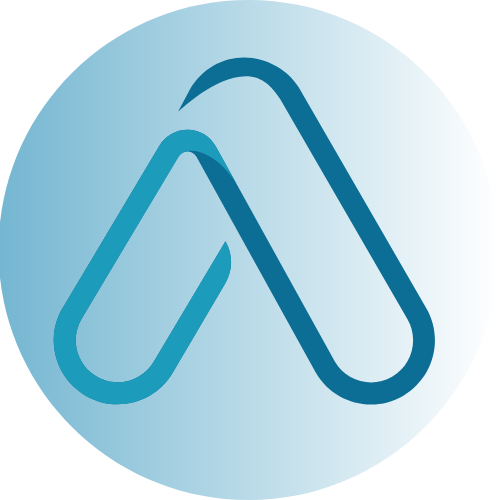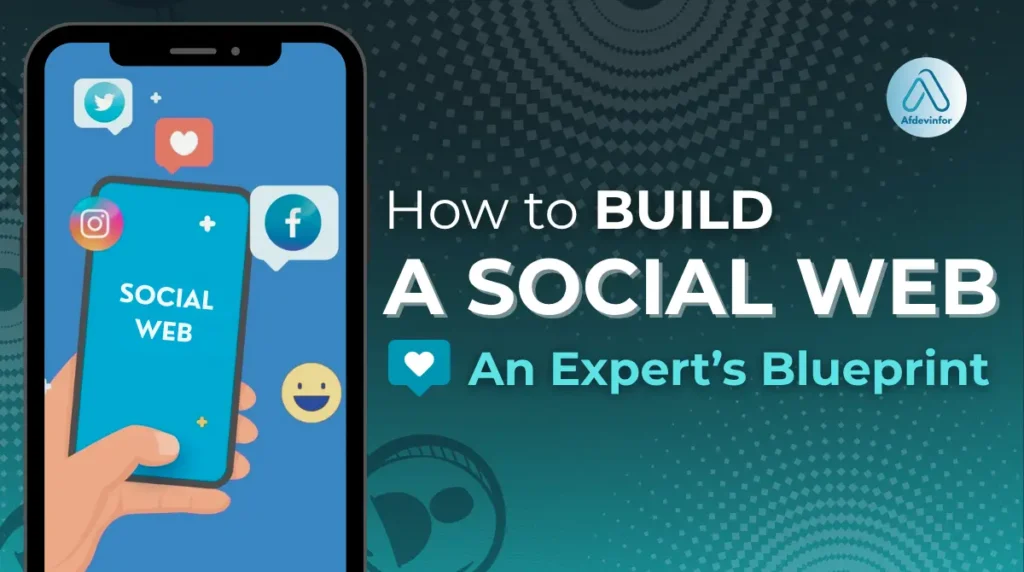Every social media giant started with a single idea. In my 10+ years working with web technologies, I’ve seen countless ambitious projects, but the ones that succeed share a common trait: a solid blueprint. This guide provides the engineering and business plan for how to build a social website, turning your vision into a reality. This isn’t just a theoretical overview; it’s my practical, ‘engineered-for-growth’ roadmap, honed from years of hands-on experience. We’ll move beyond the basics to cover the entire lifecycle of your platform.
Here’s a clear roadmap of what I’ll cover:
- Strategic Foundation: Defining your niche, audience, and monetization model before writing a single line of code.
- Architecture & Features: Planning your Minimum Viable Product (MVP) and choosing the right technology stack for scalability.
- Step-by-Step Development: Walking through the design, backend, and frontend development phases with practical examples.
- Compliance & Security: Building a platform users can trust by tackling data privacy and security head-on.
- Post-Launch Growth: Implementing strategies for user acquisition, engagement, and community safety.
1. Laying your strategic foundation
Before you get lost in frameworks and databases, we need to talk strategy. From my experience, many platforms fail not from bad code, but from a blurry vision. A brilliant technical execution of a flawed idea is still a failure. Let’s sharpen yours by building a solid foundation first.
The secret to building a successful community is to create a space where people feel like they belong. Niche platforms do this by default, catering to a shared passion rather than trying to be everything to everyone.
1.1. Defining your niche and unique selling proposition (USP)
You cannot out-Facebook Facebook. The era of the general-purpose social network is over. Success today lies in identifying an underserved audience or a unique angle in a crowded market. Think about specific communities. Strava isn’t just a social network; it’s a community for athletes. Letterboxd isn’t just for sharing updates; it’s a haven for film lovers. The key is specificity. Your goal is to create a one-sentence Unique Selling Proposition (USP) that clearly states who your platform is for and what makes it different.
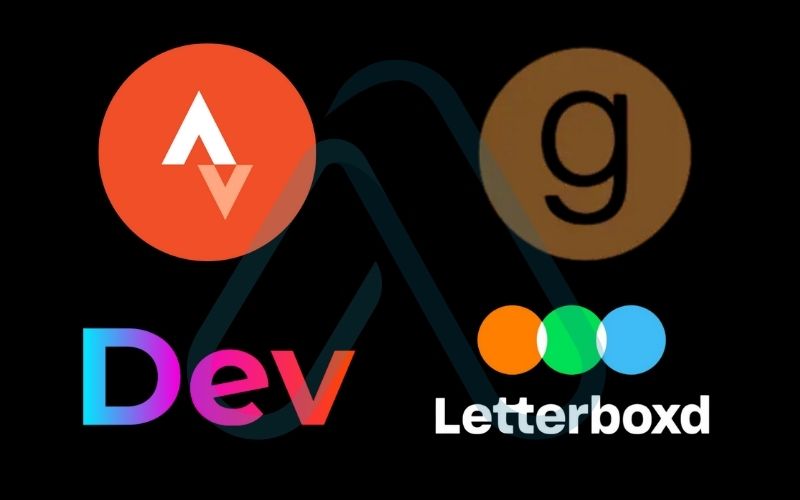
To get you started, here are some examples of successful niche platforms and their angle:
| Niche Platform Example | Their Unique Angle |
| Strava | The social network for athletes to track, share, and compare their activities. |
| Letterboxd | A social platform for film enthusiasts to log movies, write reviews, and create lists. |
| Goodreads | A community for readers to discover, rate, and discuss books. |
| Dev.to | A social network for software developers to share ideas and collaborate. |
ACTIONABBLE TIP: Before you go any further, spend a few hours researching potential competitors in your chosen niche. Sign up for their platforms. What do they do well? Where are the gaps you could fill? This initial reconnaissance is invaluable.
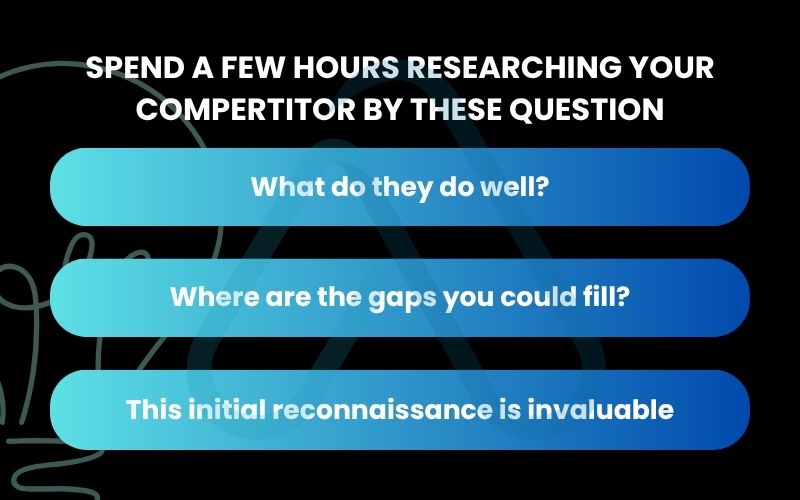
1.2. Mapping your monetization strategy from day one
One of the biggest mistakes I see founders make is pushing monetization to the back burner with a vague plan to ‘figure it out later.’ Your monetization model directly impacts your user experience and feature set, so it must be part of your initial blueprint. Early financial planning simplifies countless later decisions.
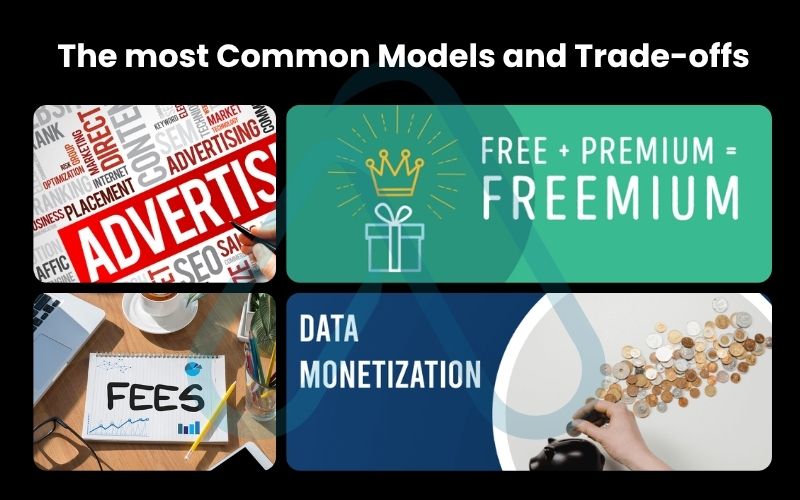
Here are the most common models and their trade-offs:
- Advertising: The classic model. It’s relatively easy to implement but can degrade the user experience and requires a large user base to be profitable.
- Subscription Tiers (Freemium): A core product is free, but users pay for advanced features (e.g., LinkedIn Premium). This provides predictable revenue but requires you to create premium features compelling enough to justify the cost.
- Transaction Fees: Your platform facilitates transactions (e.g., a marketplace or booking service) and takes a small percentage. This model scales directly with platform activity but requires building a critical mass of buyers and sellers.
- Data Monetization: Selling anonymized, aggregated user data to third parties for market research. This can be lucrative but is fraught with ethical and privacy concerns that can destroy user trust if handled improperly.
2. Feature planning and architecture
Now that your strategy is clear, we can start architecting the product. The key here is not to build your dream platform all at once but to launch a Minimum Viable Product (MVP). An MVP for a social network contains only the essential features needed to solve a core problem for your niche audience. The goal of an MVP is learning, not perfection. It allows you to launch faster, get real user feedback, and validate your core idea with minimal risk and investment.
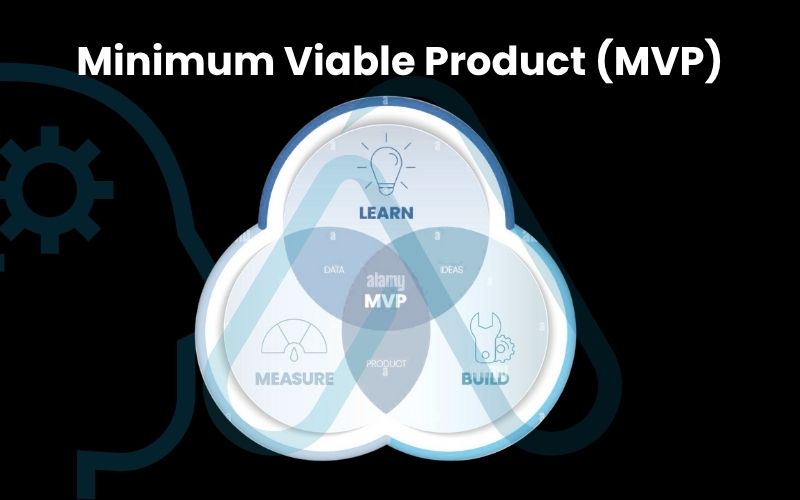
2.1. Core features you can’t launch without
When planning the essential features for a social media website, you need to focus on the core loop of user interaction. Here are the absolute must-haves for your MVP.
- User Registration & Authentication: The gateway to your platform. This includes secure sign-up, login, and password management. It’s a foundational requirement.
- User Profiles: A digital identity for your users. At a minimum, this should include a username, profile picture, and a short bio.
- Content Creation: The heart of any social platform. This could be text posts, image uploads, video sharing, or something unique to your niche. Keep it simple for the MVP.
- News Feed / Timeline: The central hub for content discovery. Like Twitter’s timeline, a central feed is crucial for users to see updates from others they follow or from the community at large.
- Basic Social Interactions: The ‘social’ part of the network. This includes fundamental actions like following other users, liking posts, and leaving comments.
2.2. Advanced features to plan for post-MVP
A smart social network development roadmap includes a phased rollout of functionality. After you’ve launched your MVP and validated your core assumptions, you can begin adding features that create a richer experience. This ‘engineered-for-growth’ approach keeps development manageable.
Here are some powerful features to consider for future releases:
- Real-time Messaging: Private, one-on-one or group conversations.
- Notifications: Alerts for likes, comments, new followers, and other important activities to keep users engaged.
- Groups / Communities: Sub-forums or spaces where users can gather around specific topics, strengthening community bonds.
- Advanced Search & Discovery: Helping users find relevant content, topics, and other people.
- Content Moderation Tools: Essential for platform safety, allowing you and your users to report and manage inappropriate content.
3. A comparison for builders
This is where my technical expertise comes into play. Choosing a tech stack is one of the most critical decisions you’ll make, impacting your development speed, scalability, and hiring ability. The ‘best’ tech stack doesn’t exist; the ‘right’ one depends on your team’s skills, budget, and specific needs. Your social media platform architecture consists of four main components: a front-end (what users see), a back-end (the server-side logic), a database (where data is stored), and hosting infrastructure.
3.1. Tech stacks for social platforms
I’ve broken down some of the most popular stacks to help you understand the landscape. This comparison should serve as a starting point for your research.
| Tech Stack | Components | Development Speed | Scalability | Talent Pool | Best For |
| MERN | MongoDB, Express.js, React, Node.js | Fast | Excellent | Very Large | High-performance, real-time applications with a single language (JavaScript) across the stack. |
| Django/Python | Python, Django, PostgreSQL/MySQL, React/Vue | Very Fast | Very Good | Large | Rapid development with a ‘batteries-included’ framework that’s secure and well-documented. |
| Ruby on Rails | Ruby, Rails, PostgreSQL/MySQL, JavaScript | Extremely Fast | Good | Medium | Very rapid prototyping and building MVPs quickly due to its convention-over-configuration philosophy. |
| LAMP | Linux, Apache, MySQL, PHP | Moderate | Good | Massive | Traditional, stable, and cost-effective web development. Powers a huge portion of the web (e.g., WordPress). |
3.2. What about no-code and low-code solutions?
You might be asking, ‘Do I need to know coding to make a social website?’ The answer is no, not necessarily. No-code and low-code platforms like Bubble, BuddyBoss, or Ning have emerged as viable options for building an MVP. As a technical expert, I believe in using the right tool for the job, and for some, these platforms are the right tool. They allow you to build and launch a functional product visually, without writing code. However, it’s crucial to understand the trade-offs.
Here is a simple breakdown of the pros and cons:
Pros
Drastically faster development time, significantly lower initial cost, and no coding expertise required. This is a huge advantage for non-technical founders looking to validate an idea.
Cons
Limited customization, potential scalability issues as you grow, vendor lock-in (it’s very difficult to migrate away), and often, you have less control over your data and security.
My advice? If you’re a non-technical founder on a tight budget, a no-code MVP is a smart way to test your idea. If the idea gets traction, you can then use your initial revenue to hire developers and build a custom, scalable solution.
4. How to make a social website from scratch
Once you’ve chosen your tech stack, it’s time to build. This section provides a high-level overview of the development process, breaking down the complex journey into manageable stages. I’ll even provide some code snippets to demystify what’s happening under the hood.
4.1. UX/UI design and wireframing
Before writing code, you need a visual blueprint. This starts with User Experience (UX) design, which focuses on the logic and flow of the user journey, and User Interface (UI) design, which focuses on the look and feel. The process typically moves from low-fidelity wireframes (basic sketches) to high-fidelity mockups (detailed visual designs). Following community website UX best practices here is crucial for engagement and retention. Tools like Figma and Sketch are industry standards for this process.
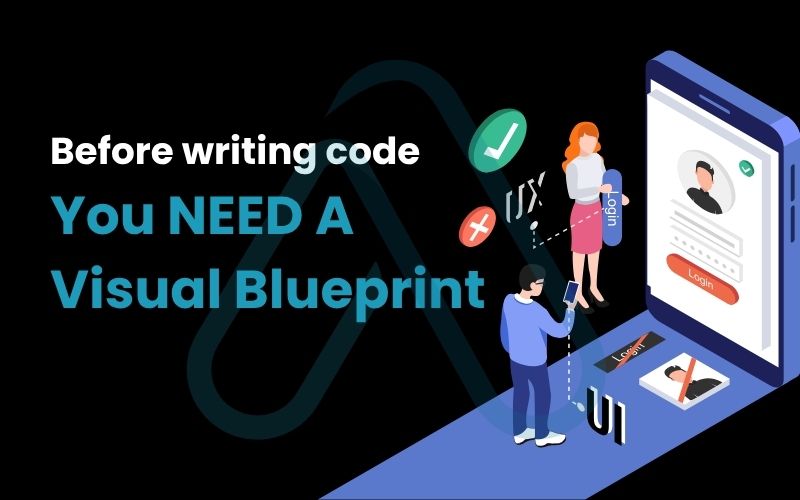
4.2. Building the brain for backend development
The backend is the engine of your platform. It’s the server-side code that handles user authentication, manages the database, processes business logic, and provides data to the frontend via an API (Application Programming Interface). It’s the part users don’t see but is responsible for all the heavy lifting.
To make this tangible, here is a small, well-commented code snippet for a basic API endpoint using Node.js and the Express framework. This endpoint could fetch a user’s profile from a database.
// Import the Express framework
const express = require('express');
const app = express();
// A mock database of users for this example
const users = {
'1': { username: 'alex', bio: 'Tech enthusiast and writer.' },
'2': { username: 'bria', bio: 'Loves hiking and photography.' },
};
// Define an API endpoint to get a user profile by ID
// Example URL: /api/users/1
app.get('/api/users/:id', (req, res) => {
// Get the user ID from the URL parameter
const userId = req.params.id;
const user = users[userId];
// If the user exists, send their data as a JSON response
if (user) {
res.json(user);
} else {
// If not found, send a 404 error
res.status(404).send('User not found');
}
});
// Start the server on port 3000
app.listen(3000, () => {
console.log('Server is running on port 3000');
});4.3. Creating the user experience for frontend development
The frontend is everything the user sees and interacts with in their browser. It’s the visual representation of your platform. Using a modern JavaScript framework like React or Vue.js, developers build reusable components (like a profile header or a post card) that fetch data from the backend API and display it to the user.
Here’s a simple React component that would ‘consume’ the backend API we just created to display a user’s profile.
import React, { useState, useEffect } from 'react';
function UserProfile({ userId }) {
// State to store the user data
const [user, setUser] = useState(null);
const [loading, setLoading] = useState(true);
// useEffect hook runs when the component mounts
useEffect(() => {
// Fetch data from our backend API endpoint
fetch(`/api/users/${userId}`)
.then(response => response.json())
.then(data => {
setUser(data); // Save the user data in state
setLoading(false); // Set loading to false
})
.catch(error => {
console.error('Error fetching user:', error);
setLoading(false);
});
}, [userId]); // Re-run if the userId prop changes
if (loading) return Loading...
;
if (!user) return User not found.
;
// Render the user's profile information
return (
{user.username}
{user.bio}
);
}
export default UserProfile;5. The builder’s compliance and security checklist
This is a section many guides gloss over, but in my view, it’s non-negotiable. Building user trust is paramount, and that starts with respecting their privacy and securing their data. Neglecting compliance and security is not only unethical but can lead to devastating legal and financial consequences. You must prioritize data privacy for social platforms from day one.
5.1. Data privacy and regulatory compliance (GDPR, CCPA)
Laws like Europe’s GDPR (General Data Protection Regulation) and California’s CCPA (California Consumer Privacy Act) have set a new standard for user data rights. You don’t need to be a lawyer, but you must understand the core principles: user consent, the right to access their data, and the right to be forgotten. Violations come with steep fines.
Here is an actionable checklist to get you started:
- Create a Clear Privacy Policy: Explain in plain language what data you collect and how you use it.
- Implement a Cookie Consent Banner: Ask for explicit consent before using non-essential tracking cookies.
- Secure Data Storage: Encrypt sensitive user data both in transit (using HTTPS) and at rest (in the database).
- Provide Data Portability: Build a feature that allows users to download a copy of their data.
- Enable Account Deletion: Give users a simple way to permanently delete their account and associated data.
Disclaimer: This is not legal advice. I strongly recommend consulting with a legal professional to ensure your platform is fully compliant with regulations specific to your business and audience.
5.2. Essential security practices
A security breach can destroy your reputation overnight. Building a secure platform involves a defensive mindset and implementing best practices throughout the development process. You don’t need to be a cybersecurity expert, but you must implement the basics.
Here are some critical security measures:
- Input Sanitization: This means cleaning any data submitted by users to prevent attacks like Cross-Site Scripting (XSS), where an attacker injects malicious code into your website.
- Password Hashing: This is the process of using a strong cryptographic algorithm to securely store passwords. It makes them unreadable even if your database is compromised.
- Use HTTPS Everywhere: Encrypting all communication between your user’s browser and your server with an SSL certificate is a baseline requirement.
- Protect Against SQL Injection: This attack occurs when a hacker uses a web form to gain access to or manipulate your database. Modern frameworks have built-in protections against this, but you must use them correctly.
CRITICAL SECURITY TIP: NEVER, EVER store user passwords in plain text. Always use a modern, strong hashing algorithm like Argon2 or bcrypt.
6. A realistic cost projection
One of the most common questions I get is, ‘How much does it cost to build a social network platform?’ The honest answer is: it depends. Costs can range from a few thousand dollars for a no-code MVP to millions for a large-scale platform. To give you a realistic framework, I’ve broken down the costs into key categories for both an MVP and a platform ready for growth.
This table provides a rough estimation to help you plan your budget.
| Cost Category | MVP Phase (3-6 Months) | Growth Phase (Post-Launch) |
| Design (UX/UI) | $3,000 – $15,000 | $2,000+ / month (ongoing) |
| Development (Dev Team) | $20,000 – $80,000+ | $10,000+ / month (retainer) |
| Infrastructure (Servers/Hosting) | $50 – $300 / month | $500 – $5,000+ / month |
| Marketing & Launch | $2,000 – $10,000 | Variable (based on strategy) |
| Legal & Compliance | $1,000 – $5,000 | $500+ / month (ongoing) |
| TOTAL ESTIMATE | $26,000 – $110,000+ | Scales with user growth |
6.1. Resource and time planning template
Time is your most valuable resource. A realistic timeline prevents burnout and keeps your project on track. Building a solid MVP is not a weekend project; it’s a multi-month commitment requiring a dedicated team, typically including a Project Manager, a UX/UI Designer, at least one Backend Developer, and one Frontend Developer.
Here’s a typical timeline for building an MVP:
- Phase 1: Strategy & Planning (2-4 weeks): Niche definition, feature scoping, tech stack selection.
- Phase 2: UX/UI Design (3-6 weeks): Wireframing, prototyping, and final visual design.
- Phase 3: MVP Development (12-20 weeks): Backend and frontend coding, API integration, and core feature implementation.
- Phase 4: Testing & Deployment (2-4 weeks): Quality assurance, bug fixing, and server setup for launch.
To make this even more practical, I’ve created a simple project planning template in Google Sheets. You can make a copy and adapt it for your own project: [Link to a Public Google Sheets Template Here].
7. Engineering for growth and safety on the post-launch playbook
Launching your MVP is not the finish line; it’s the starting line. The real work of building a community begins now. Many founders are so focused on the build that they neglect the critical post-launch phase. This is where your ‘engineered-for-growth’ mindset truly pays off, ensuring you have a plan for acquiring users, keeping them engaged, and maintaining a safe platform.
7.1. Acquiring your first 1,000 users
Getting your first users is the hardest part. You don’t have a big marketing budget, so you need to be scrappy and creative. One powerful case study is Reddit, whose founders initially submitted all the content themselves under different usernames to make the site look active.
Here is a simple plan for your first weeks post-launch:
- Leverage Existing Communities: Go to where your target audience already hangs out. Share your project in relevant subreddits, Discord servers, or Facebook groups (always follow their rules about self-promotion).
- Build in Public: Share your journey on platforms like Twitter or LinkedIn. People love to follow a founder’s story, and it builds an early-adopter community before you even launch.
- Content Marketing: Start a blog or newsletter focused on your niche. Provide genuine value and establish yourself as an authority in the space.
- Implement a Simple Referral Program: Encourage your first users to invite their friends by offering a small reward, like an exclusive badge or early access to new features.
7.2. Driving engagement and retention
Getting users to sign up is one thing; getting them to come back is another. High engagement is the sign of a healthy community. You need to track key metrics like the DAU/MAU (Daily Active Users / Monthly Active Users) ratio to understand how ‘sticky’ your platform is. Excellent community website UX best practices are key to this.
Here are some proven tactics to boost engagement:
- Push Notifications & Email Digests: Strategically notify users about relevant activity to pull them back into the platform.
- Gamification: Introduce simple game-like mechanics such as points, badges, or leaderboards to reward participation.
- Foster User-Generated Content (UGC): Run contests, feature a ‘post of the week’, or create prompts that encourage users to contribute.
- Be Present: As a founder, be an active participant in your own community. Talk to your users, ask for feedback, and make them feel heard.
7.3. Community moderation and platform safety
I cannot stress this enough: a healthy community requires proactive moderation. An unmoderated platform will inevitably descend into spam, abuse, and toxicity, driving away the very users you want to attract. You must have a plan for platform safety from day one.
Your moderation framework should include:
- Clear Community Guidelines: A public document that outlines acceptable behavior.
- A User Reporting System: An easy way for users to flag inappropriate content or behavior.
- A Moderation Workflow: A clear process for your team (or you, in the beginning) to review reports and take action (e.g., remove content, warn users, or issue bans).
WARNING: Neglecting community moderation is an existential threat to your platform. A toxic environment is the fastest way to kill a budding social network.
8. Frequently asked questions
How long does it take to build a social media website?
For a well-designed MVP with core features, you should plan for a timeline of 4 to 9 months. As I detailed in the timeline section, this includes strategy, design, development, and testing. The exact duration depends heavily on the complexity of your features, the size of your development team, and the tech stack you choose.
Can one person build a social network?
Yes, it is technically possible for one person to build a simple social network, but it’s an incredibly challenging undertaking. A solo founder would need to be a ‘T-shaped’ individual with deep expertise in one area (like backend development) and solid skills in frontend, design, and product management. For a solo founder, I’d strongly recommend using no-code tools for the MVP or finding a technical co-founder to share the workload.
How do social media sites handle massive amounts of data and traffic?
They achieve this through a concept called scalability, which involves designing the social media platform architecture to handle growth. Key techniques include load balancing (distributing traffic across multiple servers), using a CDN (Content Delivery Network) to serve images and videos faster, and advanced database optimization like sharding (splitting a database across multiple machines). As a platform grows, it often moves to a microservices architecture, breaking the application into smaller, independent services that can be scaled individually.
Glossary of key terms
| Abbreviation | Full Term | Meaning |
| API | Application Programming Interface | A set of rules that allows different software applications to communicate with each other. |
| CDN | Content Delivery Network | A geographically distributed network of proxy servers that cache content close to end-users for faster delivery. |
| CCPA | California Consumer Privacy Act | A state statute intended to enhance privacy rights and consumer protection for residents of California. |
| DAU/MAU | Daily Active Users / Monthly Active Users | A key metric used to measure the ‘stickiness’ and engagement of an online platform. |
| GDPR | General Data Protection Regulation | A regulation in EU law on data protection and privacy for all individuals within the European Union. |
| HTTPS | Hypertext Transfer Protocol Secure | The secure version of HTTP, where communications between your browser and the website are encrypted. |
| LSI | Latent Semantic Indexing | In SEO, these are terms and phrases that are semantically related to a target keyword. |
| MERN | MongoDB, Express.js, React, Node.js | A popular JavaScript-based technology stack for building web applications. |
| MVP | Minimum Viable Product | A version of a new product which allows a team to collect the maximum amount of validated learning about customers with the least effort. |
| SQL Injection | Structured Query Language Injection | A code injection technique used to attack data-driven applications, in which malicious SQL statements are inserted into an entry field for execution. |
| SSL | Secure Sockets Layer | A security protocol that creates an encrypted link between a web server and a web browser. |
| UI | User Interface | The visual elements of a program or device that a user interacts with. |
| USP | Unique Selling Proposition | A factor that differentiates a product from its competitors, such as the lowest cost, the highest quality or the first-ever of its kind. |
| UX | User Experience | The overall experience of a person using a product, especially in terms of how easy or pleasing it is to use. |
| XSS | Cross-Site Scripting | A type of security vulnerability where malicious scripts are injected into otherwise benign and trusted websites. |
9. Final thoughts
Building a social website is a marathon, not a sprint. It’s a journey that demands a rare blend of strategic vision, technical execution, and a deep commitment to community management. By following the ‘engineered-for-growth’ philosophy I’ve laid out, you’re not just building an application; you’re building a scalable, secure, and sustainable platform poised for success.
- Strategy First: Your success is determined before you write a line of code. A clear niche, USP, and monetization plan are your most important assets.
- Build Lean with an MVP: Don’t try to build everything at once. Launch with core features, learn from real users, and iterate.
- Security and Compliance are Non-Negotiable: Trust is the currency of any social platform. Protect your users’ data as if it were your own.
- Launch is Just the Beginning: The real work starts post-launch with user acquisition, engagement, and proactive community moderation.
Remember, every thriving community started with one person deciding to build a space for others to connect. You have the blueprint. Now, take the first step. For more in-depth guides to help you on your journey, explore our Essential Digital Tools on Afdevinfo.
